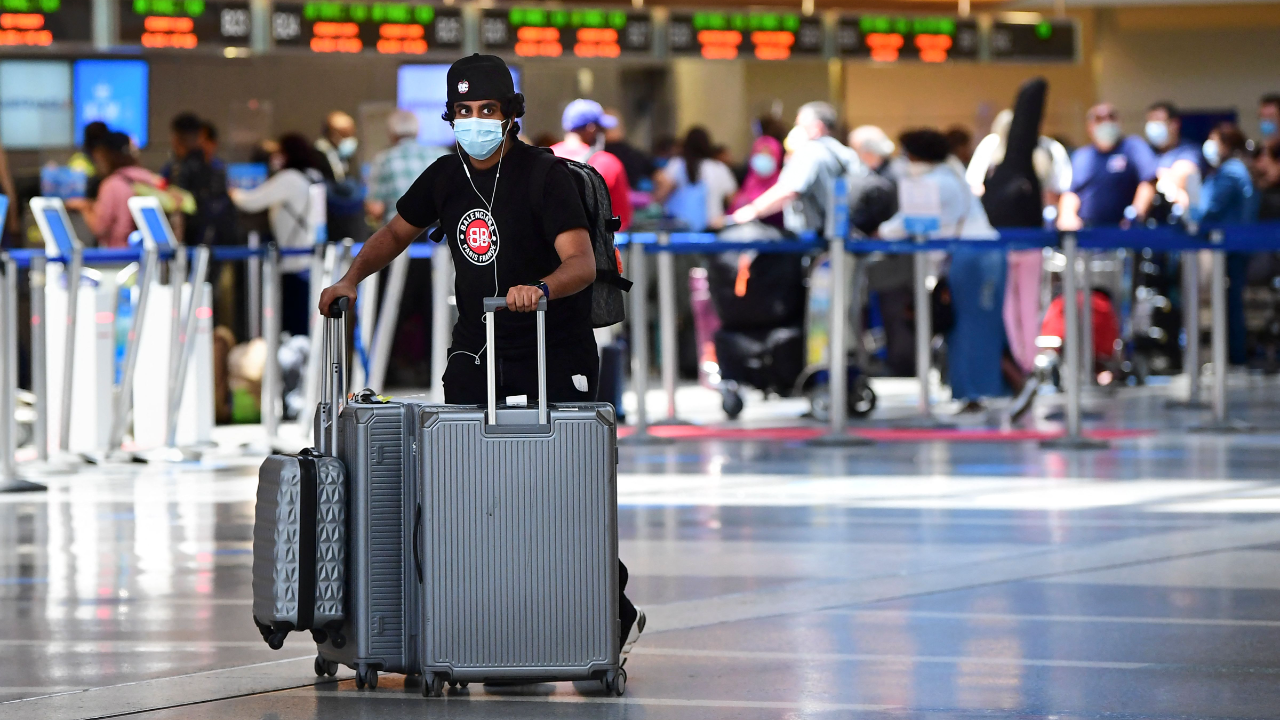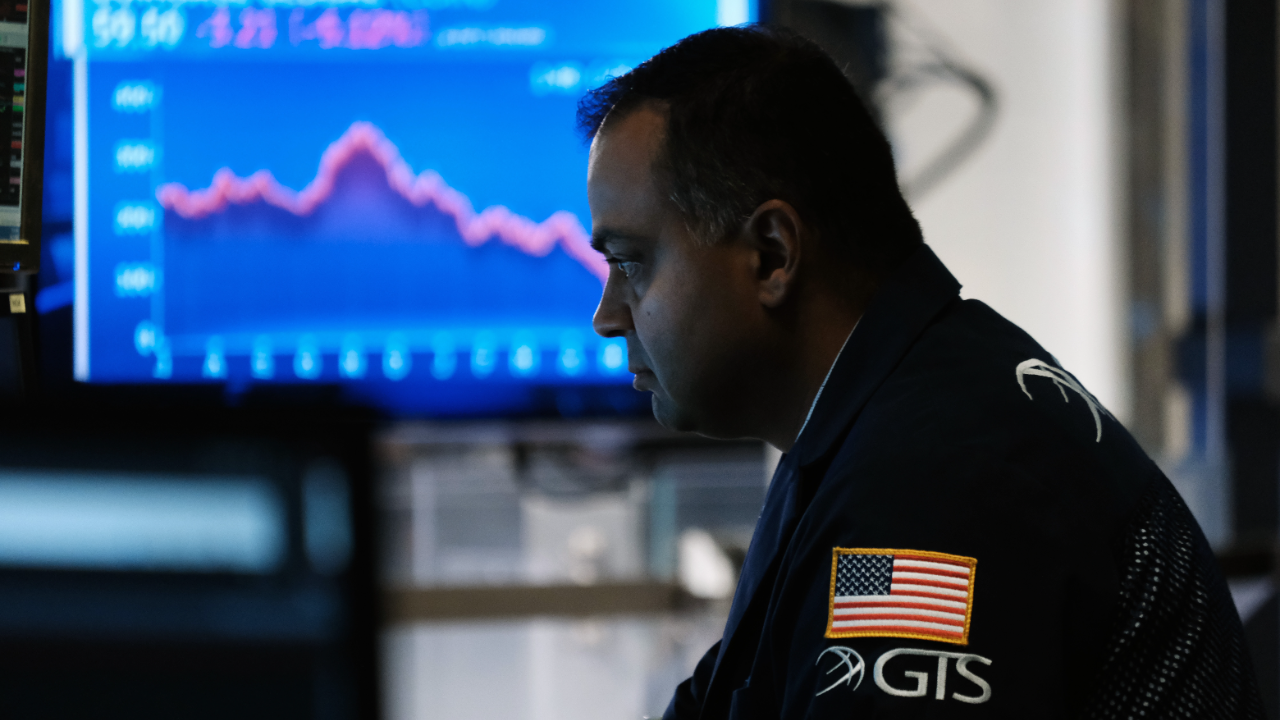The COVID recession is officially over. Here’s why experts say that doesn’t matter

The devastating coronavirus-induced recession ended in April 2020, meaning the worst downturn in a lifetime was also the shortest, the National Bureau of Economic Research’s Business Cycle Dating announced Monday.
That call might not make one bit of a difference for those on Main Street, however.
The technical definition of a recession is a period of significant economic decline, likely lasting for longer than a few months. On a map, downturns look like rolling hills, with the peak of economic activity descending. In the coronavirus pandemic’s case, that descent was more like a cliff, with the outbreak cratering activity in February 2020, wiping out nearly 1 in 7 jobs and putting 1 in 4 people on jobless benefits in just a two-month span.
At the lowest point in the cycle — known as the trough — the economy starts to pick back up. Vaccinations and hordes of consumers are offering hope that the financial system has turned a corner.
Yet, even with the recession likely being over, it doesn’t mean things are as good as they once were. About 10.4 million people are still drawing unemployment insurance (UI) and the U.S. economy has some 6.8 million fewer jobs, according to the most recent figures from the Department of Labor.
“The real question is not, ‘When is the recession technically over?’ but, ‘When are we moving from recovery to expansion?’” says Odeta Kushi, deputy chief economist for First American Financial Corporation. She equates the recovery period to the time that it’ll take the U.S. economy to get back to its pre-pandemic size. “When we start to move into expansion, that’s when we start to see some meaningful impact in overall economic well-being. The expansion stage is what we’re looking to get to.”
What’s going on in the U.S. economy? Even the experts are perplexed
The economy is sending some mixed signals, meaning it’s a hard time to track just how far off that expansion might be. Elevated unemployment might suggest it’s going to be difficult to find a job, yet companies are warning of labor shortages and saying they can’t find enough available workers. Further complicating the picture, job openings in May were at record levels and nearly matched the number of jobless workers.
Personal income and household net worth have risen to new heights despite devastating joblessness, bolstered by a booming stock market and sky-high housing prices.
Showing even more dislocation, many businesses aren’t at full production capacity and supply chains are still fractured at a time when consumers are demonstrating record demand for travel, shopping and dining out, thanks to stimulus checks and a year’s worth of time locked down at home. That’s pushing up prices to their highest in 30 years, with other key inflation measures rising to the highest in more than a decade.
The hope is that those disruptions will dissipate eventually, driven by reopening flukes and a mismatch between supply and demand. The fear, however, is that the Federal Reserve might lose patience and hike interest rates sooner than expected to get prices back on track. Record federal spending and an ultra-accommodative U.S. central bank aren’t helping investors’ inflation worries, either.
Top of market participants’ minds is a 15-year stretch of out-of-control inflation that dominated the 1970s and ‘80s, thanks to big federal spending and a too-slow Fed. The Fed ended up having to manufacture a recession by hiking interest rates, hoping to get prices back under control after they rose by as high as 15 percent annually. That downturn was so severe that the economy ended up experiencing what’s known as a double-dip recession, where the financial system falls, rises, then falls again.
“The Fed would like to avoid that as much as possible, but the Fed may be a little bit too late taking away the punchbowl this time, which may cause them to come down harder down the road,” says Scott Anderson, chief economist at Bank of the West, which “raises the risk that they actually cause the next recession or financial crisis.”
Under the Fed’s nose might also be permanent shifts in the U.S. economy that could take years for officials to fully realize. Households, for instance, might’ve discovered that they can get by on one income instead of two. Others might have chosen to work fewer hours or retire early.
“You have to throw the models out the window and put your finger in the air and see which way the wind is blowing,” Anderson says. “Our models haven’t been super constructive for us in terms of forecasting [the coronavirus crisis] because it’s been so unusual compared to the past four or five recessions.”
What to watch: Gross domestic product (GDP), employment, savings rates and inflation
By its broadest measure, the U.S. economy isn’t far off from reaching its pre-pandemic size. By the total value of all goods and services in the economy, the financial system is just 0.8 percent smaller than it was before the pandemic. Many economists, including officials on the Fed itself, are expecting the economy to be bigger than it was before the pandemic by the end of this year.
Helping that picture is a resilient consumer. Sales at restaurants and retailers have already soared past pre-pandemic levels, according to the Department of Commerce. A survey of U.S. households out of the University of Michigan, meanwhile, found that sentiment is climbing from its pandemic-low. That suggests consumers should have the demand to keep spending.
Their wherewithal to spend, however, is a bit trickier to estimate. Record household net worth is likely related to stimulus checks and enhanced unemployment benefits. Congress was hoping those fiscal relief measures “could be a bridge” to get consumers through a devastating jobless crisis, but those savings levels could run dry if job growth doesn’t catch up.
“That’s the most sustainable way to have income,” says Luke Tilley, chief economist and senior vice president at Wilmington Trust, referring to job growth. “If stimulus checks are enough to keep people spending, firms will be optimistic, and that, in turn, drives economic growth. But if there’s a disappointment to the downside, if it starts to taper or weaken, you could have employers getting a little bit more pessimistic.”
Job growth will of course depend on the labor supply. Keeping an eye on labor force participation, particularly among prime-age workers who are between the ages of 25 and 54, will be a key way that you can strip out any longer-run changes to the labor market, such as those who decided to retire early. That measure is still 1.7 percentage points below its pre-pandemic level.
And if you’re wanting to see whether inflation will be more transitory versus sustained, look under the hood to find out how much rent prices and housing costs are climbing. Experts say the Fed cares more about those measures, and over time, it’s the largest single-weighted item in the overall Consumer Price Index (CPI).
Better yet, economists say to track broad-based wage growth, along with pay gains in areas that are echoing concerns of labor shortages, which tends to be a stronger indicator of whether price increases will be longer-lasting.
Wage gains have been “higher than where they’ve been for a while, but I don’t think it’s a red alert yet,” Anderson says. “This whole wage-price spiral argument that some people are starting to spin on Wall Street is a little premature, especially when you’re looking at the 7 million [Americans] out of work. We’ve got a ways to go.”
Bottom line
Wilmington Trust’s Tilley compares the end of a recession to a sick person in a hospital: Just because the proverbial patient (the U.S. economy) is improving, doesn’t quite mean the hardship is over.
Continue saving for emergencies and cutting back on any nonessential purchases. If you’re still experiencing financial hardship, arrange a forbearance program with any lenders or financial firms that you regularly pay a bill to — steps experts say are crucial to recession-proofing your wallet.
“Can we leave the hospital? That’s an incredibly important question right now because, by an objective measure, our patient, our U.S. economy, is on a healthy dose of steroids, both from the government and also from the central bank,” Tilley says. “The most important thing is, we don’t know how strong the patient is going to be when we take the steroids away, and when the patient is asked to get up and walk around on his or her own.”
Learn more:
- Facing long-term joblessness? Try these 7 things if you’re struggling to find work
- Will the Fed raise interest rates in 2021? Here’s what experts are saying
- Worried about surging inflation? Here’s 3 ways to protect your wallet from taking a big hit
Why we ask for feedback Your feedback helps us improve our content and services. It takes less than a minute to complete.
Your responses are anonymous and will only be used for improving our website.
You may also like

Survey: Odds of a recession by September 2024 fall to 46%





